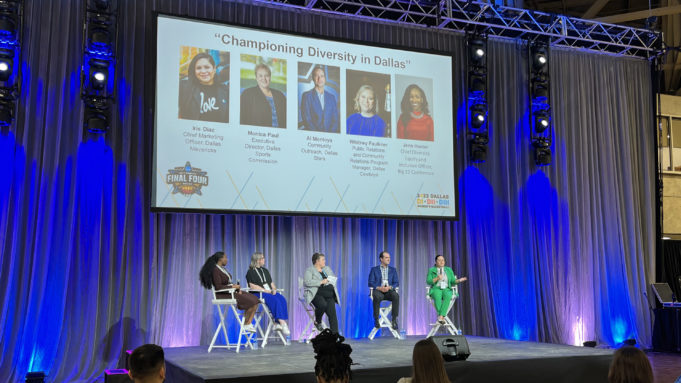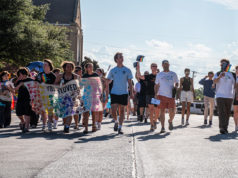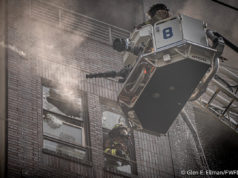I saw Emmitt Smith at the Women’s Final Four.
The Pro Football Hall of Famer passed me as I walked through the American Airlines Center concourse before Sunday’s final. And, hey, if you’re going to stage a big basketball event in a football hotbed, you expect to see people like him there. Interestingly, it wasn’t the first time his sport had come up in discussion that weekend.
On Thursday, I took in a Beyond The Baseline panel in Tourney Town called “Championing Diversity in Dallas.” It featured representatives from several local sports organizations, including one from Smith’s former team. Whitney Faulkner serves as public and community relations programs manager for the Dallas Cowboys. One initiative about which she talked involved providing support to local schools and school districts looking to create girls flag football programs.
Faulkner noted that she is fighting to bring girls flag football to the varsity level in Texas, as it is in seven other states. She cited Fort Worth as a pilot program for the initiative and talked about working productively with Fort Worth ISD Athletic Director Lisa Langston to implement it. The last couple of years, I’ve documented a girls flag clinic conducted in Cowtown by Adrian Lunsford as part of the College Gridiron Showcase event, with Langston in attendance observing her student-athletes auditioning for NAIA college coaches and improving their skills. In 2023, we saw a marked difference in skill development and organization over the initial event in 2022. The program has clearly made progress. I saw Langston Friday morning at a Women’s Basketball Hall of Fame breakfast, and she confirmed that was the case.
“I’m so pleased with the direction that we’re going in, and the thing is, it’s just like a player, an athlete, you’re never going to be as good as you’re going to be,” she said.
Faulkner wants to help Fort Worth continue to improve. She also wants to implement similar programs in more districts, which has not been a speedy process to date. This weekend’s setting might provide some encouragement.
“Women’s basketball has set a great role model for how we achieve this,” she said during the panel.
In 1972, the NFL’s all-time leading rusher at the time, Jim Brown, didn’t attend the NCAA Women’s Final Four. He couldn’t have if he wanted to – the NCAA didn’t sanction women’s athletics until 1982. But when Title IX legislation passed that year, it did provide an assist to those who wanted to create more athletic opportunities for girls and women.
In Texas, especially, developing those opportunities in the 1970s meant working around the popularity of the male-dominated sport in which Faulkner works. Chris Plonsky, a longtime administrator at the University of Texas at Austin, suggested that her university’s success in creating a viable women’s athletic presence set an example for others trying to follow the same path.
“Everybody else said, ‘If they can do it in the shadow of big football, we can do it too,’” Plonsky explained.
Basketball became the movement’s lead sport.
“At UT, we led with basketball (and) Coach Conradt. Jody Conradt had teams that were so appealing. They were competitive, they were excellent, played at a high level, and we created a fan base. And when the fans began to come to women’s basketball, we began to talk about our other sports – swimming, volleyball, tennis, track,” she said.
Faulkner talked about her sport on a large stage surrounded by massive sponsor activations in the fan fest. The Women’s Final Four games themselves sold out and set TV ratings records. If nothing else, it showed that a sport can start small and grow into something big. Of course, advocates for women’s football don’t want it to take 50 years for them to achieve that scale. They hope the high-profile success women’s basketball exhibited this past weekend, along with the noteworthy jumps in popularity for women’s sports like soccer and cricket plus recent efforts by the NFL and USA Football, will accelerate that process. That would come as welcome news for women like Faulkner, Langston, and my friend Chelsea Alt, whose girls flag team spent this weekend going 3-0 at a tournament hosted by the Green Bay Packers.
The involvement of powerful men’s football entities like the Packers and Cowboys is promising. Faulkner and I agreed that it makes a lot of sense for such organizations to encourage female participation in football if for no other reason than to create fan interest in their own products. Meanwhile, the girls involved will learn about concepts like fitness, teamwork, and decision-making that will benefit them in the years to come – a significant majority of female executives participated in sports in their formative years.
“I think the future is unlimited. It’s unlimited opportunities for female student-athletes in various sports, just like with the flag football that we’re starting,” said Langston. “They’re talking about possibly making it an Olympic sport. Now, how exciting would that be if one of my student-athletes eventually played on an Olympic football team? Things like that give me goosebumps.”
Women’s football has progress to make before it gets to an Olympic-sized stage where it regularly attracts Hall-of-Fame-caliber spectators. But if basketball is any example, it can be done.












